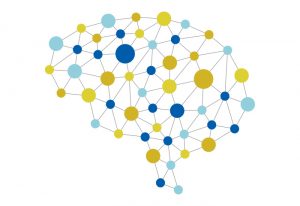GUEST BLOGGER: Kathryn Biel
Disclaimer: This is an opinion piece and the views expressed do not necessarily represent the views of Education Resources, Inc.
This year has been a tough one. Lots of new referrals. I did more new referral evaluations from September to December than I did all of last year. And most of the kids came on program. These kids are hot messes. The majority in kindergarten (although there were a few needy first graders too). As I travel from school to school in my district (five elementary schools), I heard the same thing. This kindergarten class is tough. Needy. Young. Not ready for kindergarten. The parochial school in district (which I also service) had the same complaint. I flippantly joked, “What was in the water six years ago?”
Then, at the Therapies in the School Conference, I had a similar discussion with a therapist from New Hampshire. And then one from Massachusetts. It wasn’t just me. It wasn’t just here. This class is a hot mess.
I guess it’s good for one teacher to know that others are struggling, but it’s not fixing the problem either. And I like to know why. There are some easy answers. Some of our kids didn’t have preschool experience. Some of our kids are from very poor, disadvantaged homes, which we know impacts education and educational-readiness. It seems a disproportionate number of our kids are super young this year, just making the cutoff date (which, in New York, is December 1st, so we have lots of four-year-olds throughout September and October and into November). We’re still following the developmentally inappropriate guidelines of the Common Core Learning Standards.
All of these things make sense, but they don’t really explain the difference between a class two or three years ago and this class. Why is this class so not ready?
I don’t know the answer, but I have a theory. In addition to the factors listed above, there are two main factors that I think are significantly impacting the development and school readiness of our children.
The container lifestyle and mobile technology.
As therapists, we all recognize the detrimental effect the container lifestyle has on early development. Here are my thoughts on this:
- The constant position in supine and flexion impacts motoric development that is initiated through prone. Lack of prone positioning and extension through prone impacts visual tracking and development, especially convergence and divergence, which is especially used in education in shifting gaze between the board and the desktop.
- The reticular activating system, responsible for transitioning between sleep and wake and into periods of high alert and attention, is stimulated through cervical extension. Lack of extensor muscle development fosters poor posture in which capital extension is present but true cervical extension is not, thereby inhibiting activity in the RAS. Babies are stuck in flexion, which impacts the sleep-wake cycle.
- There is more and more retention of primitive reflexes because babies do not move through the developmental sequence to re-wire the brain to integrate these reflexes. This impacts a child’s ability to cross midline (and therefore have a hand dominance), maintain a seated position especially while moving the head, and maintain emotional regulation, particularly in the case of the retained Moro reflex.
- Use of standing containers facilitate extensor posturing and an on-toe weightbearing pattern, which can cause tight gastrocs and contribute to toe-walking. It also encourages increased capital extension, scapular retraction with elevation, lumbar lordosis, and knee hyperextension. All the compensations PT’s work diligently to break in adults with postural dysfunction. And we’re causing this as soon as the baby is facing gravity.
- Poor tolerance to prone causes decreased quadruped crawling, which leads to shoulder girdle weakness. This causes poor development of the palmar aches, in addition to impaired fine motor skills.
- Plagiocephaly which can lead to torticollis, which can impact visual tracking as well as overall posture and ability to maintain one’s positioning in a chair.
There may be more as well.
Now, the second piece: mobile technology and screen time. The explosion of iPads and smartphones and other mobile devices being accessible in most homes took off approximately six to seven years ago. Just as this year’s kindergarten class was being born. The majority of these children have always had screens in front of their faces. The constantly shifting images, the bright colors, the stimulation from the LED screens, the audio input. From birth. How many times have we seen toddlers working their parent’s phones? One year-olds with their own iPads? Babies with a video playing on a phone while the adults enjoy an uninterrupted dinner? Heck, they even make a potty with it’s own tablet.
Here’s my thought: Kids today can’t function without a screen. They can’t listen and process verbal directions without the ever-shifting visual stimulation. There appears to be a significant underdevelopment of audio skills with an over reliance on visual input (and this could be further impacted by impaired eye development as discussed above). We have a whole grade-level of kids who can’t learn from a person because they’re so used to being engaged by a screen.
If I’m right, this is frightening.
Don’t get me wrong—I love my technology. My kids have tablets and iPods and Chromebooks (although they did not have access to this technology until at least the age of seven). I may be slightly addicted to my phone. But I really worry about five and six year-olds who simply cannot follow two and three-step commands.
Here’s how I figured this out. I watched a class doing a GoNoodle Yoga video (one of the Maximo ones). The class looked great. Then, I had the teacher leave the audio on, but turn the picture off. Initially about half the class continued what they were doing, and even completed the next step. The other half of the class immediately stood up (they had been bent over, stretching to one leg), and seemed paralyzed by the fact that the image had disappeared. The teacher gave the instruction to listen and follow along. At the end of the video, every single child was bent over as they had been when the image was turned off. They should have been standing. Not one single child had been able to listen and follow the directions.
I’m not a researcher, and I don’t have data (although I may start collecting some) to support this. These are my theories and hypothesis of why these kids are struggling so. Try the GoNoodle (or similar video) trick and see if your kids can continue on once the image is turned off. What do they do?
What do you think? How are your kindergarteners this year?
~Kathryn Biel, PT, DPT
]]>
 Debra Evans Rogers[/caption]
Debra Evans Rogers[/caption]

